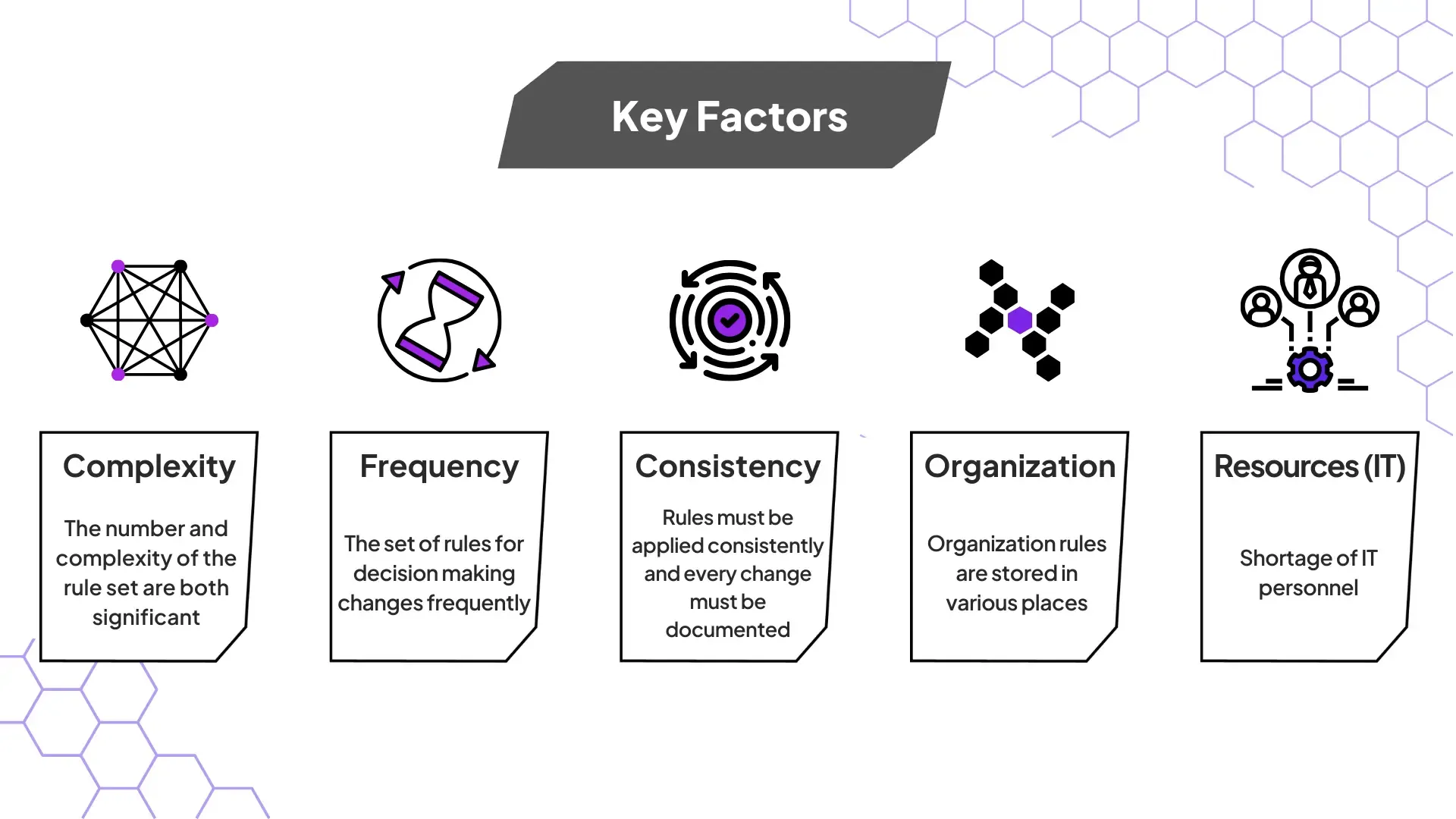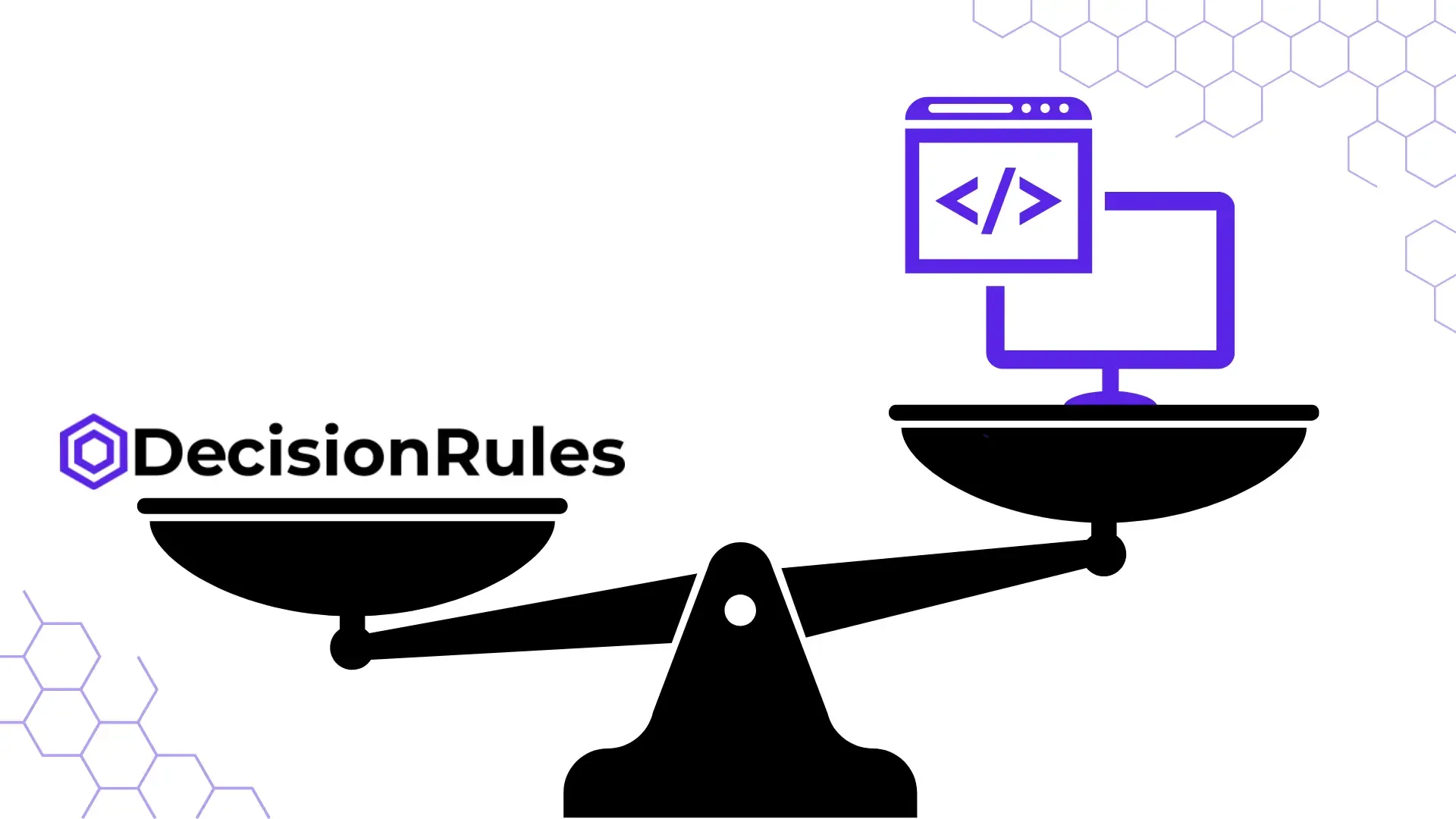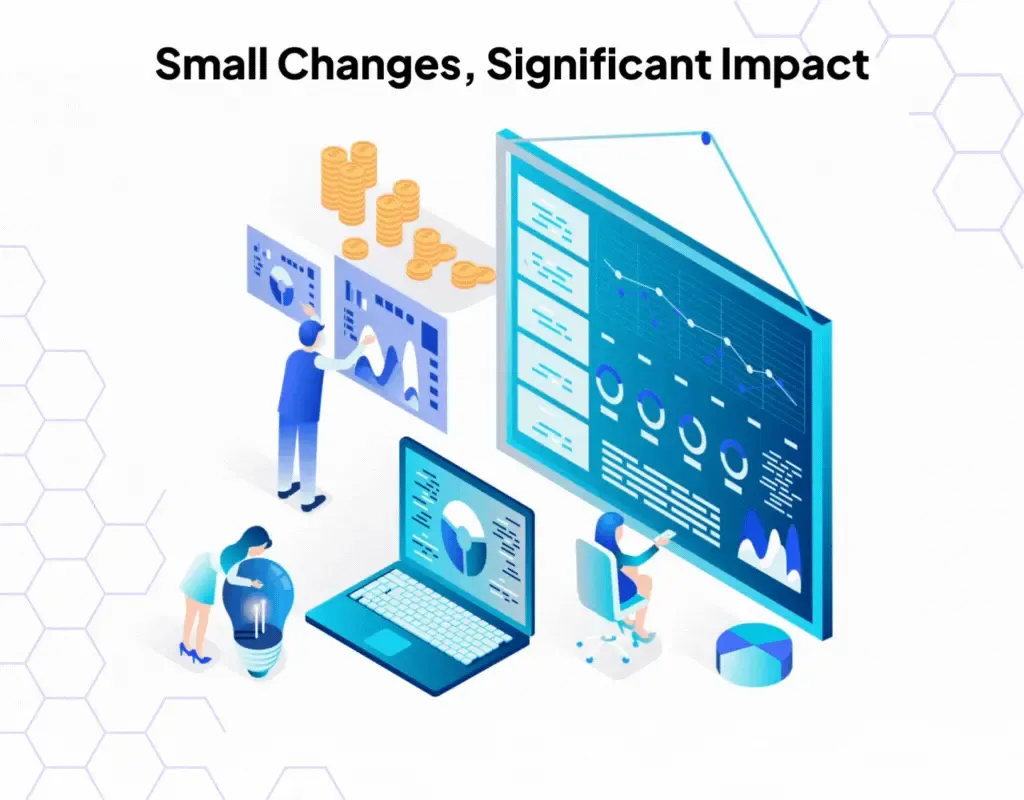Dozens of institutions (several Fortune 500 among them) have employed DecisionRules to automate their processes, accelerate their development cycle and deployment process, and lower the burden on their highly demanded, ergo expensive, and difficult-to-hire programmers and/or DevOps specialists.
In the segments of Banking, Insurance, Logistics, E-commerce, Intelligent cities, Fraud detection, Healthcare, Aviation and few others, we have had the opportunity to observe and consider various processes and the way how - rule engine - niche software can be effectively deployed.
Decision engines of diverse types have been in use in the software community for decades. What has quite dramatically evolved over the last decade is their accessibility, scalability and, last but not least, affordability. Whereas in the late 90s and early 00s, it used to be a class of software doomed to reside only within the architectonic landscape of the most influential institutions driving essential calculations, nowadays such a tool is ready to serve every CIO, CFO, CRO, COO almost instantly at a fraction of the price.
AI has been a buzzword of ultimate dominance these days, however, it is fair to acknowledge that within an average industrial operation, only a limited number of sophisticated processes suitable for AI utilization exist as AI is still in its infancy. On the other hand, a “simple” decision process based on boolean functions, standard sets, truth tables and operators are and will be ever-present.
While scientists, visionary engineers and journalists enjoy discussing AI on the first deck of an ocean cruise, the vast majority of “white collars” struggle in the lower-deck and engine-room with tons of manual and semi-manual processes. As the tip of the iceberg holds the shining AI flag, the rest of the processes under the surface rely and run on dusted legacy systems dating back to the early 80s and 90s, at best heavily underpinned by so popular (and for justifiable reasons) Excels.
However, the gap between the idealized portrayal of AI and the practical realities of everyday work underscores the urgent need for comprehensive modernization efforts. Beyond simply adopting cutting-edge technologies, organizations should commit to overhauling and streamlining their legacy systems, ensuring that all aspects of their operations are equipped to thrive in the digital age.
As forward-looking software engineers and enthusiasts, we are thrilled by the advancement in recent years and months in the field of AI. Nevertheless, we must acknowledge plenty of opportunities within the span of technologies developed decades ago.
Having witnessed the implementations of new decisioning processes within organizations across various industries we have drafted a set of key factors every analyst should be able to observe. Based on these observations a new decisioning process can be established, supported by any type of rule engine:

1. The number and complexity of the rule set are both significant
As the quantity and complexity of decision rules and rule sets grow, so does the challenge for those tasked with describing and effectively maintaining business processes. Without the appropriate automation of daily rule logic, such processes become vulnerable and susceptible to errors. In the best-case scenario, this can result in delays when even a minor change becomes a nightmare.
2. The set of rules for decision making changes frequently
In today's dynamic environment, myriad reasons are driving the need for change in a rule strategy. These may stem from shifts in business policy, pricing and discount changes, repayment plans or regulatory changes imposed by governing bodies. Regardless of the source, every obstacle encountered during business rule changes affects the agility of your business.
3. Rules must be applied consistently and every change must be documented
Every change to business logic can impact your company. Therefore such modifications must be implemented carefully under control. Additionally, certain segments governed by system regulations require proof that every decision complies. DecisionRules engine allows you to represent every rule in an easily understandable manner and can prove invaluable in this field.
4. Organization rules are stored in various places
As your company grows, so does the number of specific rules, often scattered across departments and multiple storage locations. This fragmentation leads to inconsistencies in rule logic, making change management nearly impossible. By centralizing rules, updates and modifications become easier, improving efficiency and enhancing compliance. This streamlined approach simplifies integration with other systems, improving efficiency and agility.
5. Shortage of IT personnel
In today's tech-driven world, many organizations struggle with a shortage of IT professionals. Picture this (massively condensed) scenario: each time you need to alter business logic, you must specify the requirements, forward them to your IT team for implementation/deployment, and then review the outcomes (often more than once). Such a process is time-consuming for both parties and only impedes your company's operational pace. However, with low-code solutions, even a non-tech manager or analyst can implement changes to business logic. This hands-on approach enables quicker responses to market shifts, giving your organization a competitive edge.
Our recent case study proves what everyone has already suspected, yet for numerous reasons, a majority of decision-makers decided to overlook. We selected one of our major implementations to assess the efficiency of the software development life cycle when driven purely by “manual labor” versus utilizing a rule engine system.

Case Study
Recently, one of our significant clients sought to digitalize its decision-making processes by implementing DecisionRules software for full decision logic automation. The provided rule specification list comprised over 300 rule sets, containing approximately 3000 individual rules of varying complexity. We have leveraged our hard data to examine (only) one of a few beneficial aspects (costs) solving the same task with two different approaches.
Utilizing the DecisionRules.io low-code platform, the process involved defining and implementing rules, followed by extensive testing and regular validation meetings with the client. This comprehensive effort spanned approximately 200 man-days (MD), with 110 MD allocated to rule definition and implementation and the remainder to testing. Accounting for an estimated 20% annual rule change rate, the total cost over a 5-year period, including implementation, change management, and licensing with additional support, amounted to USD 270k, considering the daily rate of a senior consultant in Europe as a benchmark .
In our analysis of a representative sample, we consistently found notable differences in the effort required to implement identical rule sets, whether hard-coded or low-coded through our rule-engine platform. Specifically, the implementation effort for hard-coded rule sets was approximately ⅓ higher compared to those executed via our rule-engine platform.
This finding underscores the specific advantages of employing a rule-engine platform for rule implementation, not only enhancing efficiency but also optimizing resource allocation. Utilizing such platforms can yield significant time and cost savings for businesses seeking to streamline their rule implementation processes.
Hence, had the company opted to hard code the rules in its respective systems , the implementation timeline would have been extended by 30% to 50%. This prolonged timeline not only postpones the rollout of critical business rules but also accrues additional costs associated with prolonged development cycles. Furthermore, hard-coded rule modifications necessitate close collaboration between the Business Rule Manager and the IT department, adding an extra layer of complexity to the change management process.
Considering the same rates as above, along with change management overhead and a 5-year timeline, the total cost would increase to between $450k and $510k.

Conclusions
The era of so-called Digital Transformations followed by a period of bewilderment framed by the laconic question “Why do Digital Transformations Fail?” leaves behind an enormous number of institutions with the uneasy task of systematically streamlining their often highly complex processes and IT architecture. The transposition of manually intensive processes into digital form via a rule engine is definitely an endeavor (however partial) worth consideration in this context. The last two decades of work in the space of software development, software integration and/or process re-engineering inspire us to believe there is a lot of low-hanging fruit for those who want to utilize well-proven concepts to make the standard decision-making processes within their organizations swift, punctual and cost-efficient.
Co-authors: Erik Lehocký, Vaclav Kandrnal and Ladislav Rubáček

Lukáš Čapek
Analyst
